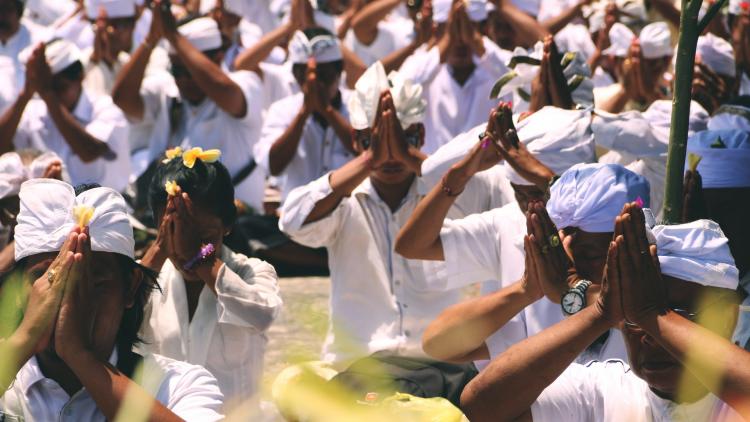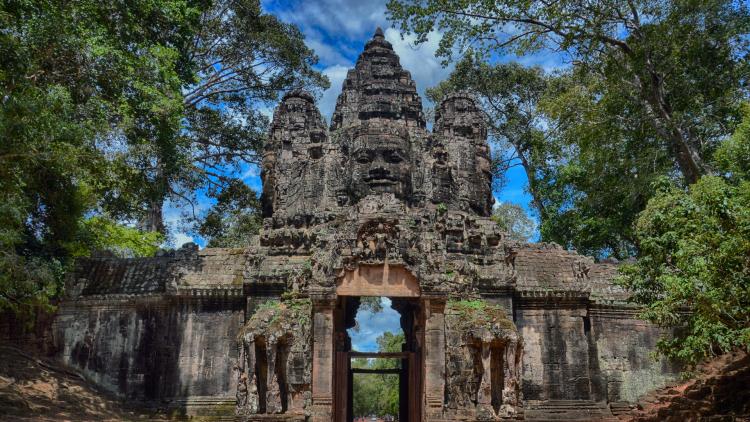Hamta Mousavi

Key information
- Roles
- Department of History PhD Research Student
- Qualifications
-
MA in Persian Arts, University of Tehran, 2006 - 2008
BA in Carpet Design, The University of Sistan & Baluchistan, 2001 - 2005 - Email address
- hm69@soas.ac.uk
- Thesis title
- Studies in the architecture of Sasanian Zoroastrian fire temples and their relationship to the astrological concepts of chronocratoria and melothesia.
- Internal Supervisors
- Professor Almut Hintze
Biography
Hamta's academic journey is marked by a relentless pursuit of knowledge and a deep passion for Persian culture and history.
Currently pursuing a PhD in History at SOAS-University of London since 2023, she continues to delve into her scholarly interests with modules covering Research Methods, Pahlavi Language (Ancient Persian), Seminars, Lectures, and Thesis work. Prior to her doctoral studies, Hamta completed an MA in Iranian Studies at SOAS-University of London from 2022 to 2023. Her coursework encompassed diverse subjects such as Artificial Intelligence and Human Security, Avestan (Ancient Persian), Iran's History, Culture, Politics, as well as specialized topics like Zoroastrianism. Her academic journey began with an MA in Persian Arts from the University of Tehran (2006-2008) and a BA in Carpet Design from The University of Sistan & Baluchistan (2001-2005), where she developed a strong foundation in traditional arts, design, and cultural studies. Work Experience & Skills Hamta brings a wealth of professional experience to her academic pursuits. She has served as an Art Instructor and Tutor, honing her skills in teaching traditional research, Islamic Art, and Carpet Designing from 2002 to 2020.
In the realm of administration, Hamta has excelled in various roles. From 2013 to 2020, she contributed significantly to the Caspian Financial Institute's Public Relations and Customer Service Department, where she demonstrated leadership as a Team Leader. Her responsibilities included managing critical issues and fostering collaboration between departments.
Prior to her work at the Caspian Financial Institute, Hamta served as Deputy Manager at the Iranian Handicrafts Organization's Sistan & Baluchistan Office in Zahedan, Iran, from 2002 to 2009. In this role, she demonstrated proficiency in office management and administration. Other Skills Aside from her academic and professional achievements, Hamta possesses a diverse skill set. She is adept at administrative software, with a proficiency in MS Office Suite (Word, Excel, Access, PowerPoint). Her linguistic capabilities include fluency in English, Persian/Farsi, Ancient Persian Language, Avestan, and Pahlavi. Publications & Awards Hamta's academic contributions extend beyond the classroom.
She has authored dissertations on topics such as the contributions of Ebrahim Pur-e-Dawud to the study of Zoroastrianism and Semitic & Israelite Emblems and Symbols in Persian Achaemenids Arts. Additionally, she has produced applied art handbooks and pamphlets for the public through the Iranian Islamic Arts Organization. Her research endeavors have earned her recognition, including membership in the Iranology foundation (Bonyad Iranshenasi) and publications in esteemed journals like "Handicrafts & Economy" from Tabriz International University. Conclusion Hamta Mousavi is a dedicated scholar, artist, and administrator whose diverse experiences have shaped her into a well-rounded individual. With a commitment to academic excellence and a passion for Persian culture, she continues to make meaningful contributions to her field.
Key publications
MA dissertation “On the Contributions of Ebrahim Pur-e-Dawud (Pourdavoud, 1885-1968) to the Study of Zoroastrianism”
MA dissertation “Semitic & Israelite Emblems and Symbols in Persian Achaemenids Arts”
Applied art handbooks and pamphlets for the public by Iranian Art, the Iranian Islamic Arts Organization.
Member of ” Iranology” foundation (Bonyad Iranshenasi). “ Sistan Rugs” Research
Handicrafts & Economy” Tabriz International University, Publication. Discuss the Extent to Which the Category 'Monotheism' Is a Useful Means of Understanding the Zoroastrian Religion. Can it be considered as a philosophy. Outline, Compare, and Contrast the Key Features of Good and Evil in Zoroastrianism. Discuss the dangers and opportunities of AI (artificial intelligence) for human security (in academia). Discuss the Extent to Which the Category 'Monotheism' Is a Useful Means of Understanding the Zoroastrian Religion. Can it be considered as a philosophy
Research interests
This research investigates the architectural components of Sasanian Zoroastrian fire temples, also known as Chartaqis, with a specific focus on their astrological significance, particularly in relation to chronocratoria and melothesia. Drawing on historical inscriptions, original Zoroastrian manuscripts, and Pahlavi texts, the study aims to elucidate how these temples were designed and constructed to align with ancient Persian astrological beliefs.
Through the utilization of Geographic Information Systems (GIS) technology for mapping and spatial analysis, the research seeks to analyze the spatial relationships of these temples with celestial phenomena and temporal cycles. The methodology integrates textual analysis, GIS mapping, and field surveys to comprehensively explore the astrological dimensions of Sasanian Zoroastrian fire temples.
Chronocratoria, the classification of time into specific periods or cycles, and melothesia, the belief in the interconnectedness between celestial phenomena and earthly events, macrocosm and microcosmare two key aspects of my investigation. Through a systematic survey of existing literature, historical inscriptions, and original Zoroastrian manuscripts, I seek to assess how prominently these astrological principles manifest in the architectural design and symbolism of Sasanian Zoroastrian fire temples.
Utilizing Geographic Information Systems (GIS) technology, my survey will analyze the spatial distribution and alignment of fire temples in relation to celestial phenomena, agricultural practices, and other astrologically significant factors. By mapping the locations of these temples and examining their orientation and layout, I aim to identify patterns that reflect the integration of chronocratoria and melothesia into their architectural features.
Overall, my survey seeks to contribute to a nuanced understanding of the relationship between ancient Persian astrology and the architectural characteristics of Sasanian Zoroastrian fire temples. By systematically assessing the presence of chronocratoria and melothesia in these temples through a multidisciplinary approach, I aim to advance scholarly knowledge of the cultural, religious, and architectural heritage of ancient Persia.
Personal links
Contact Hamta
- Social media


